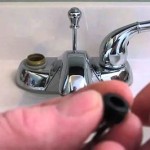Fitting a Bathroom Ceiling Extractor Fan Motor in Spain: A Comprehensive Guide
Proper ventilation is crucial for maintaining healthy and comfortable living conditions, particularly in bathrooms. In Spain, where humidity can be a significant issue, installing a bathroom ceiling extractor fan is often a necessary preventative measure against dampness, mould growth, and unpleasant odours. This article provides a detailed guide for fitting a bathroom ceiling extractor fan motor in Spain, focusing on the practical aspects, legal considerations, and safety precautions involved.
The process of fitting a bathroom ceiling extractor fan motor encompasses several stages, starting with planning and preparation, followed by the actual installation, and culminating in testing and ensuring compliance with local regulations. Careful attention to detail and adherence to safety guidelines are paramount throughout the entire process.
Key Point 1: Planning and Preparation
Before commencing any physical work, a thorough planning phase is essential. This involves selecting the appropriate extractor fan, assessing the existing electrical infrastructure, and ensuring adherence to Spanish building regulations.
Choosing the Right Extractor Fan: Selecting the correct extractor fan model is critical for effective ventilation. Factors to consider include the size of the bathroom, the level of humidity typically experienced, and the desired noise level of the fan. Extractor fans are typically rated by their extraction rate, measured in cubic meters per hour (m³/h). A general guideline is to multiply the bathroom volume (length x width x height) by an air change rate of between 6 and 8 air changes per hour to determine the required extraction rate. In Spain, where humidity levels can be high, opting for a slightly higher extraction rate than strictly calculated can be beneficial.
Additionally, consider features like a humidistat (which automatically activates the fan when humidity levels rise) and a timer (which allows the fan to run for a pre-set period after the light is switched off). These features can significantly improve the fan's efficiency and effectiveness in combating dampness.
Assessing the Electrical Infrastructure: Prior to installation, a thorough assessment of the bathroom’s electrical system is mandatory. This includes identifying a suitable power source for the extractor fan and ensuring that the existing wiring is capable of handling the additional load. It is highly recommended to engage a qualified electrician to perform this assessment, particularly if there is any uncertainty about the electrical system's capacity or condition. In Spain, electrical work must comply with the REBT (Reglamento Electrotécnico de Baja Tensión), the low-voltage electrical regulations.
The electrician can also advise on the appropriate type of circuit breaker and wiring to use. Furthermore, they can verify that the installation complies with all relevant safety standards, minimizing the risk of electrical hazards.
Understanding Spanish Building Regulations: All building work in Spain, including the installation of extractor fans, must comply with local building regulations. These regulations vary slightly from region to region, so it's vital to check with the local authorities (ayuntamiento) for specific requirements. Generally, the regulations address issues such as ventilation rates, noise levels, and electrical safety. Failure to comply with these regulations can result in fines or the requirement to rectify the installation.
The Código Técnico de la Edificación (CTE), Spain's building code, contains detailed regulations relating to ventilation (specifically in its Documento Básico HS3, Calidad del Aire Interior). Adhering to the stipulations outlined in the CTE regarding airflow, noise levels, and electrical safety is crucial for ensuring compliance and avoiding potential issues with building inspections.
Key Point 2: Installation Process
The installation process entails preparing the ceiling, wiring the fan, mounting the motor unit, and connecting the ducting. Precision and adherence to safety guidelines are paramount throughout this stage.
Preparing the Ceiling: The first step is to prepare the ceiling for the extractor fan. This typically involves cutting a hole in the ceiling that is the correct size for the fan unit. Precision is key here, as an incorrectly sized hole can compromise the fan's performance and stability. Use a suitable hole saw or jigsaw, depending on the ceiling material. Ensure to wear appropriate safety glasses and dust mask to protect against debris.
If the ceiling is made of plasterboard (pladur), it's important to use a plasterboard-specific cutting tool to prevent damage. If the ceiling is concrete, a core drill will be necessary. It is generally recommended to slightly undersize the initial hole, then carefully enlarge it as needed to achieve a snug fit.
Wiring the Fan: Wiring the extractor fan must be performed by a qualified electrician in accordance with Spanish electrical regulations (REBT). This involves connecting the fan's power supply to the existing electrical circuit, ensuring correct polarity and grounding. Before commencing any wiring, always isolate the circuit at the main consumer unit (cuadro eléctrico) to prevent electric shock. Use a voltage tester to confirm that the circuit is de-energized.
Different extractor fans have different wiring configurations, so it's important to carefully follow the manufacturer's instructions. Typically, the wiring will involve connecting the live (marrón), neutral (azul), and earth (amarillo/verde) wires. Ensure that all connections are secure and properly insulated to prevent short circuits or other electrical hazards. The earth wire is particularly important for safety, as it provides a path for fault current to flow to ground in the event of an electrical fault.
Mounting the Motor Unit: Once the wiring is complete, the motor unit can be mounted to the ceiling. Most extractor fans come with a mounting bracket or clips that secure the unit in place. Ensure that the unit is securely fastened to the ceiling joists or other structural members to prevent it from falling. Use appropriate screws or fixings that are suitable for the ceiling material.
It's also important to ensure that the unit is level, as an uneven installation can affect the fan's performance and lifespan. Use a spirit level to check the alignment and make any necessary adjustments.
Connecting the Ducting: The final step is to connect the ducting to the extractor fan. The ducting is responsible for carrying the extracted air to the outside of the building. It's essential to use the correct diameter ducting, as insufficient ducting can restrict airflow and reduce the fan's efficiency. Flexible aluminum ducting is commonly used for this purpose, as it's easy to install and can be bent to navigate around obstacles.
Ensure that the ducting is securely connected to both the extractor fan and the external vent. Use clamps or tape to seal the joints and prevent air leakage. The ducting should be run as straight as possible to minimize resistance to airflow. Avoid sharp bends or kinks in the ducting, as these can significantly reduce the fan's performance.
Key Point 3: Testing and Compliance
After installation, rigorous testing is essential to ensure the fan operates correctly and complies with noise level regulations. Obtaining necessary certifications may also be required.
Testing the Fan's Operation: Once the installation is complete, thoroughly test the fan's operation. Verify that the fan starts and stops correctly, that the airflow is adequate, and that there are no unusual noises or vibrations. If the fan has a humidistat or timer, test these features to ensure they are functioning correctly. A simple test is to hold a piece of tissue paper near the vent; the fan should be able to hold the tissue against the vent with its suction.
Listen carefully for any unusual noises during operation. Excessive noise could indicate a problem with the motor or the fan blades. If you detect any issues, investigate them immediately and make any necessary adjustments or repairs.
Checking Noise Levels: Spanish building regulations stipulate maximum noise levels for ventilation systems. Ensure that the extractor fan complies with these regulations. Noise levels are typically measured in decibels (dB). Use a sound level meter to measure the noise level of the fan in operation. If the noise level exceeds the permitted limit, consider using a quieter fan model or installing soundproofing materials around the unit.
Obtaining Certifications: Depending on the scope of the work and the local regulations, it may be necessary to obtain certifications or approvals from the local authorities. This is particularly important if the installation involves significant modifications to the building's electrical system or ventilation system. Check with the local ayuntamiento to determine what certifications are required. A certificate from the electrician confirming the electrical installation meets REBT standards is almost always necessary.
Engaging a qualified installer who is familiar with the local regulations can simplify the certification process. They can ensure that the installation meets all the necessary requirements and can assist with obtaining the required approvals.
In summary, fitting a bathroom ceiling extractor fan motor in Spain requires careful planning, meticulous installation, and thorough testing to ensure compliance with local regulations and safety standards. While the process can be undertaken by a competent DIY enthusiast, engaging a qualified electrician and installer is highly recommended, particularly for electrical work and ensuring compliance with building codes.

Connecting Extractor Fans

Axc In Line Bathroom Fans Continental Fan

Ext External Mount Bathroom Fans Continental Fan

Commercial Tf Bathroom Fans Continental Fan

Tf Tranquil Bathroom Fans Low Profile Continental Fan

Connecting Extractor Fans

Ext External Mount Duct Fans Continental Fan

How To Clean A Bathroom Exhaust Fan Homeserve Usa

Clipsal Airflow Ce200 Ceiling Mounted Exhaust Fan 200mm
Broan High Volume Bath Ventilation Fan With Humidity Sensor Costco
Related Posts







